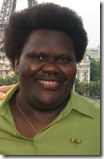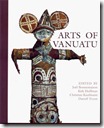This is a brief extract from Unaisi Nabobo-Baba Knowing and Learning: An indigenous Fijian approach (Suva: IPS Publications, 2006 , pp. 94-98). Here she outlines different meanings that silence has in a traditional Fijian community. This complex reading of silence challenges a Western attitude which associates silence with lack of intelligence. Nabobo-Baba’s approach has particular relevance to educators.
In Vugalei epistemology, silence plays a major role, equal to that of verbalizing. Offering a taxonomy of silence and outlining appropriate examples, both questions and puts into context the importance of verbalized communication, and demonstrates the importance of the non-verbalized communication that is contained in silence. Silence, as explicated in the taxonomy, says as much about Vugalei epistemology and culture as does verbal language.
Silence is pivotal to the Vugalei.1 It emits dignity, and summons a respect that transcends all in a vanua. It gives the vanua its value and its strength. The vanua is said to have mana when it is vakanomodi (encompassed in deep silence). When the vanua assembles, deep silence reflects how people regard their vanua, chief, god, ancestors, and relatives.There is eloquence in silence, and things important in a ceremony are best observed in silence. Silence is a pedagogy of deep engagement between participants.
In Vugalei the word for silence is noma. Increasingly, people use the word galu or vagagalu. Nomo is the base word for vakanomodi, which is the adjective that describes how quiet a place or an event is. The opposite of nomo is sosa or kosakosa\ both these words mean noise or disturbance and connote a situation that lacks peace.
Another antonym of vakanomodi is the word vakasausa (to deliberately make noise so as to offend and show disrespect).
Vugalei people believe all spaces are occupied, or taw a, hence the importance of observing silence in all places. Vugalei people perceive silence as indicative of high birth and an excellent upbringing. It is culturally desirable. However, in most schools and universities, silence, that is the absence of verbal replies, questions and comments from students, is interpreted by educators as a sign of stupidity or lack of participation, and is considered a problem.
Outlined below is a suggested cultural taxonomy of silence, which I developed from interview data and my observations of the Vugalei, as they live their lives.
- Silence and the vanua
- Ceremonial silence
- Silence and the Church
- Silence and the elements
- Silence and social class
- Silence and clan rights to public speaking
- Silence of women
- Age and silence
- Taukei and vulagi and related silences
- Silence and the supernatural
- Silence as resistance, disagreement and opposition
- Silence and relationships of avoidance
- Silence when in awe of custom
- Silence in death
- Silence of exclusion
- Silence of the land
- Silence in harvest
- Holy silence
When the vanua assembles, there is silence; only a handful of persons are entitled to speak. The vanua dictates such behaviour and protocols. An example of silence and the vanua occurred at a meeting of representatives of the Tailevu Provincial Council Office and the men and chiefs of Vugalei, convened to discuss the how mahogany plantations in Vugalei were to be harvested and the returns would be distributed. The meeting was quiet save for the government committee members, who busied themselves trying to explain what appeared to be inexplicable. Then a momo, a wise, white- haired elder, a maternal uncle, knelt and spoke. He spoke with the dignity and authority of clan truth. It was his place to speak as well as his right and obligation to reprimand those that appeared to be ‘wronging’ the clan. After he spoke, all the elders of Vugalei present and the chiefs retreated into a silence that, often misinterpreted as acquiescence, signalled total opposition by the people to the government proposal.
In all vanua meetings I attended, there was a prevailing silence. When elders speak, all listen. A monologue by the chief, is heard by the meeting in silence. Any response, if verbal, will be done by the right people, at the right time. Silence does not necessarily suggest acceptance or agreement; it can suggest a continuum of reactions from total opposition on the one hand to complete support.
People have had a long training in silence. There is silence in all vanua or village meetings; talk is limited. As Sainimere Toalagi stated:
E nagauna ni bose vakoro, warai na vivosaki se vakasosa e colo. E ra vosa na na moro vosa. 0 ratou na qaravi yaqona e ratou dabe galugalu tu …. E bibi na bose vata na qaravi ni yaqona. In village meetings, there is no unnecessary talking in the upper part of the meeting house. Only those who are destined or born to talk, do the talking. Those that serve the yaqona do so quietly, they do not chat. The meeting is an important part of vanua life; it is respectcd, and so is the serving of th <t yaqona.
The Vugalei are often heard to say, ‘Na vagagalu e bibi kina ka dokai kina na vanua’ (‘Silence puts weight and respect on the vanua’). Noise, particularly disruptive noise, is considered i tovo ni kaisi (the manner of the common folk) and is not tolerated.
Extreme silence and respect is expected when crossing the village green. Aunt Ulamila Tuinakelo noted: ‘Na vakanomodi e bibi ni da lako tu e loma ni koro (‘Silence is important when one is walking through the village’). On a similar note, Ratu Tevita Tuinakelo commented:
E da dau vakarokoroko, e rokovi na vanua, na tamata, e da dau vakatabuya kina na kaikaila tu e loma ni koro. We respect the vanua, the people, this is why we forbid people from yelling or shouting in the village.
In Vugalei, silence is also observed in the presence of older people; we lower our voices to signify respect and allow only their voices to be heard. This is the same sort of silence given to a chief, which allows the voice and wisdom of the chief to be heard and acknowledged.
Silence is observed in all important ceremonies. Only the voices of the appointed speakers are heard, and even these are highly controlled. This is what SainimereToalagi said with regards to silence during the sevusevu (the ceremony of welcome when a visitor arrives):
Na sevusevu e bibi. E rokovi, e tabu ni dua e curu mai, tabu ni dua na vosa e rogo. Ni sa coboti maka sara na yaqona, ni sa maca na yaqona vakaturaga sa rawa ni qui ia na curu mai vi ira se tu e tuba, na tama mai, vata na vivosaki e loma ni vale. Sevusevu is important. It is respected, no-one is allowed to enter the house or building while it is on, no-one is allowed to chat or be noisy. After the first mix is served, what we called the yaqona vakaturaga (grog for chiefs or leaders), the situation is more relaxed. The silence can be broken after the first bowl is empty and people have all clapped to acknowledge that that is so.
The value of silence is again demonstrated in the following report of a betrothal, in which silence was central to the display of respect between relatives and reflected the seriousness of the ceremony.
The day of the betrothal came. The visiting party (five or six relatives of the betrothed boy) approached the house to the sound of tama (customary cries of greeting) and, having being given affirmative replies from inside, slowly entered, heads bowed. Silence was the dominant ‘voice’, indicating the importance and seriousness of the occasion. Lilieta [the prospective bride] was then summoned … to come and sit in the sitting-room with an aunt, while the visiting party began their requests. The speech highlighted their intentions for Lilieta, their blood ties to the host, the importance of keeping blood ties and the vanua strong by way of the marriage, and their belief that the occasion would be blessed by God and their ancestors. The hosts then replied, the speaker affirming the visitors’ words and emphasizing how the marriage would unite related people and maintain blood ties.
Lilieta was then asked to declare her wishes with regard to the visiting party’s intentions. She maintained her silence for a while. She was asked three times before she spoke of her wishes. This silence was important, as a well-brought- up girl would be expected to show (by her silence) that she is not at all keen to leave her home. She finally agreed and a handful of whales’ teeth were presented to the hosts by the visitors in recognition of the agreement.
Na vakanomodi (deep silence) demonstrates deep respect for an occasion. It also denotes a common understanding and reverence for what is important to the vanua and to the ceremony. Relationships and the purposes of the ceremony are honoured by ceremonial silence.


